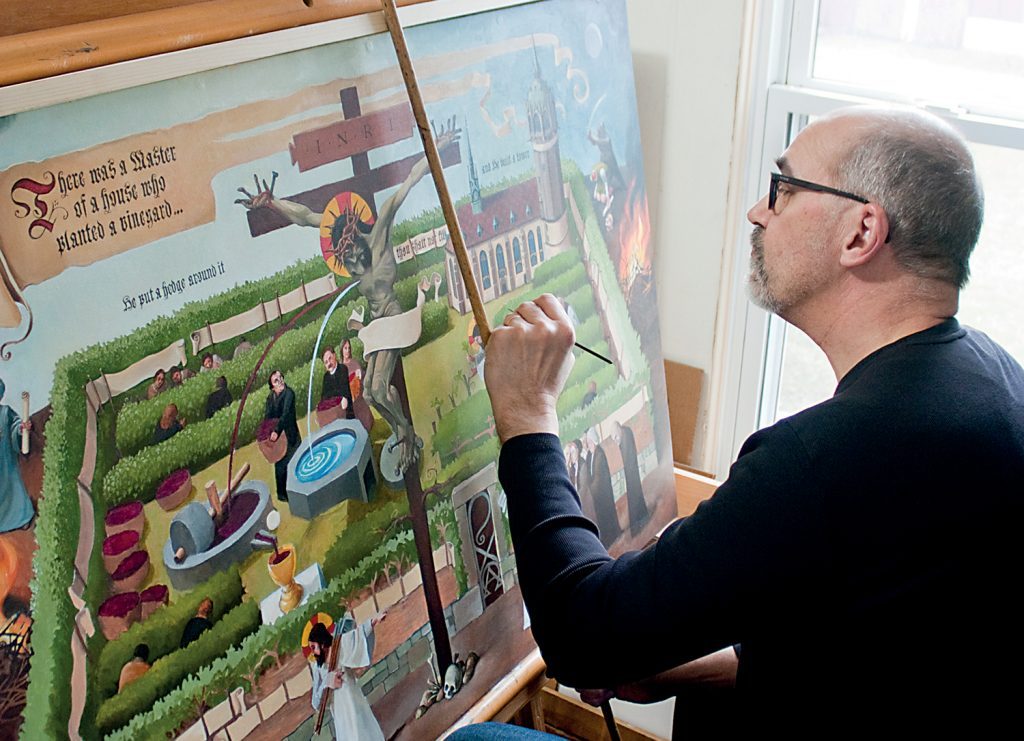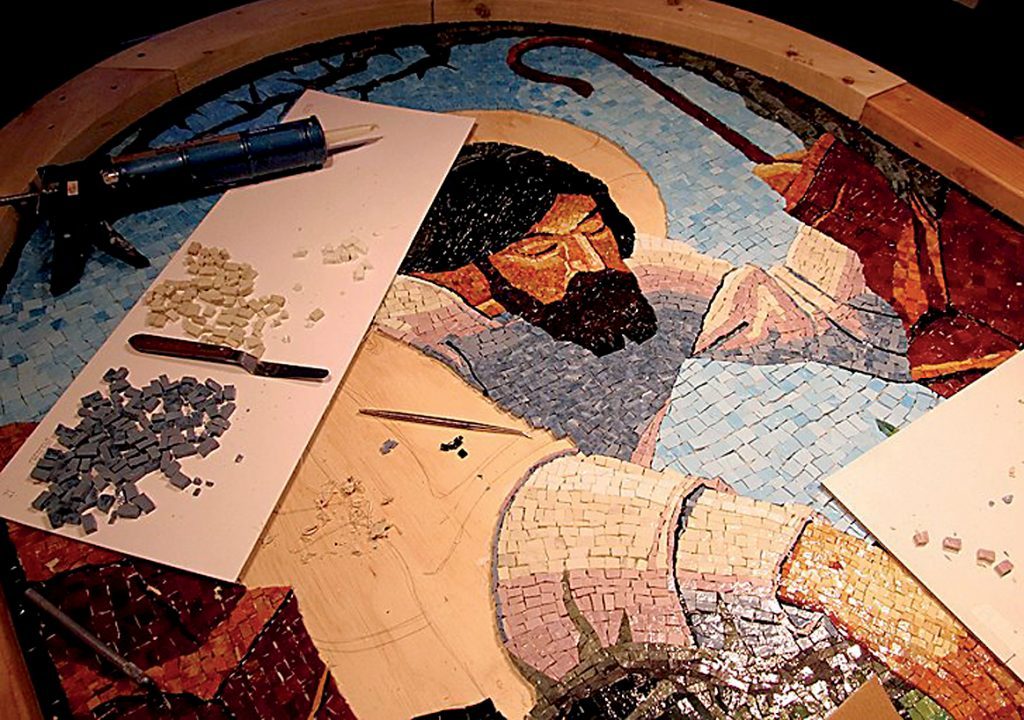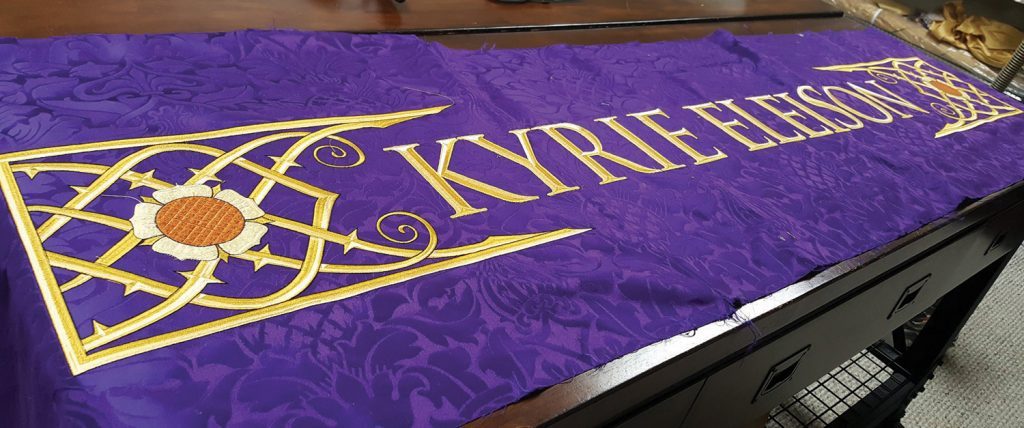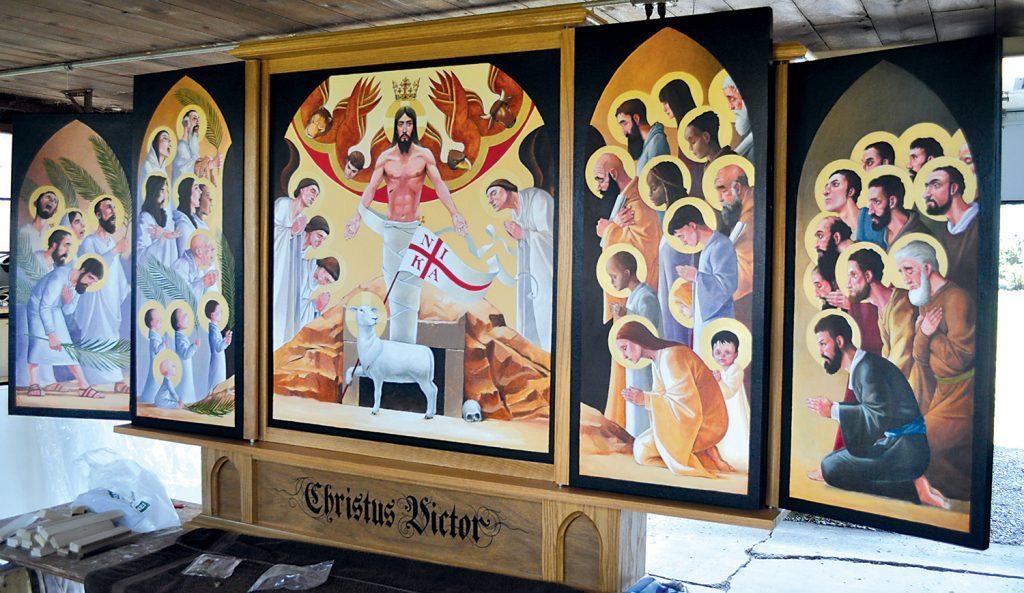Lutheran Art Explained
Share


“…Sacred artwork works best when it looks as if it were meant to be there, when it appears as though the architect had the piece in mind when the building was designed.”
Lutheran artist Edward Riojas has invested his life’s work in art – especially sacred art – and for good reason. “While art is not necessary for salvation,” he explained, “when done properly, it is the visual cousin to liturgical music and is therefore vital to edification in the Church.”
Riojas spends his days creating art that will edify God’s people in churches throughout the U.S. and beyond. His work is so in demand that there is currently a two-to-three-year waiting list for his commissioned art. He creates book illustrations and church logos, paints murals, designs paintings for chancels and sanctuaries and even builds altarpieces and processional crucifixes. His fine art giclée prints are made from his own images, and he also collaborates with the folks at Ecclesiastical Sewing to design embroideries for high-quality paraments and vestments.

What is Lutheran art?
Baptized and raised in The Lutheran Church—Missouri Synod (LCMS), Riojas is grateful that “my parents didn’t dissuade me from what might otherwise be a nice hobby or a foolish endeavor. More importantly, every bit and scrap of Lutheran catechesis has been crucial – even beyond the obvious – to what I now do.”
Armed with more than a little expertise on what makes certain artwork specifically Lutheran, Riojas jokingly shared that a piece is obviously Lutheran “when it has enough Luther seals.”
“Seriously though,” he added, “when a piece of art clearly shows Lutheran teaching to the exclusion of other theology, then it becomes truly Lutheran. We do not shrink away from showing a crucified Christ, for example, and we refrain from giving too much prominence to His mother. These two simple things would, by themselves, give offense to a great number of American evangelicals, Roman Catholics and Eastern Orthodox Christians. Other imagery would have the same effect, yet we dare not cut corners or whitewash sound theology simply to be more palatable to the world.”

When art complements sacred space
Sacred art, as it is called, is made sacred by where it’s placed, said Riojas.
“When such pieces, which otherwise are simply made of mundane materials, give praise to our Lord, point to Holy Scripture and reflect the glory of the Creator, then we call them sacred,” Riojas explained. “We shouldn’t take offense at the title, for even the ground on which Moses stood was called holy by the Lord.”
Artwork in holy places and used for holy purposes, like in sanctuaries for people to view before, during and after the Divine Service, is most helpful when it complements the space and doesn’t fight against it.
“Parishioners recognize a church as a sanctuary, perhaps even more than they realize,” said Riojas. “To that end, sacred artwork works best when it looks as if it were meant to be there, when it appears as though the architect had the piece in mind when the building was designed.”

Why sacred art matters
Care must be taken, Riojas added, to ensure that artwork placed in a sanctuary supports the liturgy and doesn’t convey incorrect theology through obvious imagery or even subtle symbolism.
“The easiest way for artwork to support the liturgy is when it includes excerpts of text from Holy Scripture, hymns or creeds,” he said. “A good litmus test, after the fact, is if the pastor is able to weave parts of the artwork into his sermons. The logical extension requires, of course, that the artwork be clear and not nebulous or confusing.”
Riojas believes there is a great “resurgence, especially among younger pastors, to view sacred art as a valuable tool within the Church.” With that in mind, LCMS churches looking to enhance their worship space may choose to consider the benefits of artwork as a tool for teaching and edifying the faith of their members as well as those who have yet to walk into their sanctuary. As the saying goes, the building, including the artwork, speaks.
“I always love visiting churches and seeing what artwork they hold,” Riojas shared. “They may not necessarily be grand cathedrals, and that doesn’t matter. It is a rather telling thing when a church building confesses something way before any member opens their mouth. Regarding sacred art, that is precisely the point.”
During a fundraiser to help a congregation renovate their organ, LCEF bought the original Ed Riojas’ “Parables of the Vineyard.” We have it proudly displayed and invite visitors to LCEF to view the painting.
